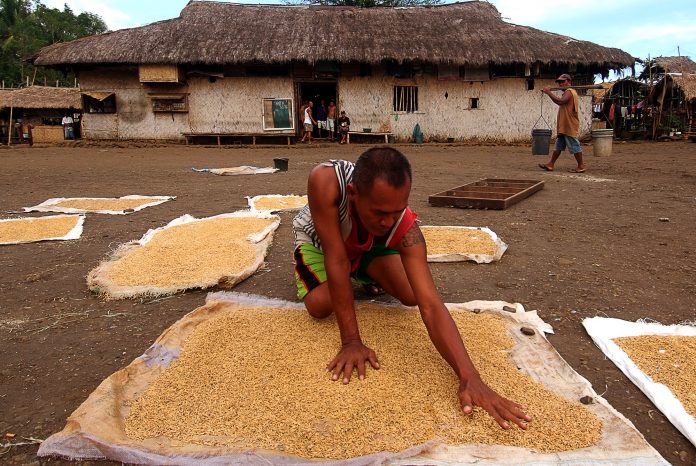Rice officials are inept. Everyone but they knew that price control would trigger a shortage. Forcible enforcement like jailing will only make both ends of the supply chain – farmers and retailers – poorer.
Still, they capped rates: P41 per kilo for regular milled, 25 percent broken; P45 for well milled, five percent broken. At once palay farmgate prices collapsed and polished grains vanished from public markets.
Early harvesters were dismayed. In Isulan, Sultan Kudarat, traders bought their palay for only P20 a kilo instead of the agreed P25. That’s P250 suddenly lost per 50-kilo sack, or P5,000 per ton.
Retailers cowered. An assistant secretary had ordered: “Government asks you to sacrifice. You should help. From our computations, you can sell not at a loss, but no profit.”
Officials don’t know the numbers. Retailers get regular-milled rice for at least P42 and well-milled for P45 a kilo. They mark up P8-P10 a kilo for overhead – helper, stall rental, utilities, plastic bags – and some profit. At the government’s price, they’ll lose P8-P10 a kilo, or P400-P500 a sack.
Consumers lose too. There’s no P41 a kilo regular milled for sale. Perhaps there’s some P45 well milled, but mixed with 25 percent broken. For the rich, there’s P62 a kilo of special rice but adulterated with five percent broken.
Traders also are victimized. Their legitimate warehouses are raided, and they’re pictured as hoarders and price manipulators.
In government the incompetent and corrupt are twins. After this price control folly will follow the racket – government-sponsored rice import cartel.
They did it in onion and sugar, from which they raked in billions of pesos. They’ll do it in rice, for billions more.
The country is short of four million tons of rice per year. A $10 kickback per imported ton spells $40 million loot, or P2.28 billion.
Plus, 10¢ kickback from the supplier per jute sack. That’s $8 million, or P456 million from 80 million empty sacks alone.
They’re setting the stage. The National Food Authority is shrieking that it has only one day’s buffer stock left. But that’s because it didn’t do its job of stockpiling local rice good for nine days. Now Malacañang claims that the government must import for emergencies.
NFA already did that last year, when it wanted to import in breach of the Rice Tariffication Law (RTL). Despite its P7 billion for 300,000 tons nine days’ buffer, it bought only 140,354 tons good for four days, state auditors noted. Critics foiled its illegal import scheme through the government-owned Philippine International Trading Corp.
Government crooks are ready this time. They’ll replicate NFA’s import modus prior to RTL prohibition. To make it look clean, they’ll again feign to negotiate government-to-government. But Vietnamese, Thai, and Cambodian counterparts know the “kalakaran” (kickbacks).
The timing is perfect. Congress will adjourn Sept. 30-Nov. 5 for All Saints’-All Souls’ Day. During that break, the Executive can slash rice import duties from 35 percent to zero.
Designated cartelist importers will look like heroes bringing in affordable rice. Imported Vietnamese 25-percent broken costs $628 per ton, or P35.80 per kilo; Thai is $607 per ton, or P34.60 per kilo (Food and Agriculture Organization update, Aug. 2023). They’ll profiteer the difference between those rates and Malacañang’s P41 per kilo cap.
Same with Vietnamese five-percent broken at $643 per ton, or P36.65 per kilo; and Thai at $646 per ton, or P36.82 per kilo. Multiply their loot by four billion kilos (four million tons).
Rice officials make this plunder possible by ignoring warnings. In July-Oct. 2022, Marcos Jr.’s first 100 days in office, world and local news reported the makings of a perfect storm:
Ukraine War, the North China floods, and Europe heatwave wiped out wheat and other cereal harvests, turning the world to rice. Drought scorched India, the biggest rice exporter. Those recurred this 2023.
China continued to divert the Mekong River into 13 dams, choking Vietnam, Thailand, and Cambodia’s rice paddies. Russian aggression disrupted the natural gas supply, the main source of nitrogen fertilizer whose prices tripled. El Niño drought was forecast this 2023-2024.
Smart officials would’ve done the obvious. Strict collection of 35 percent rice import duty; no room for Customs “tara” (bribery) for under-declaring volume, price, or type.
The multibillion-peso collection could’ve been used for farmers in the form of suitable seedlings, irrigation, cold warehousing, and mechanized drying. Fertilizer import duties could’ve been slashed while subsidizing local makers.
Yet what happened, was farmers were left to buy the cheapest although inapt seedlings. With no drainage, irrigation flooded rice lands. With fertilizer thrice the cost, farmers planted only a third of rice plots. Costly electricity made cold storage and mechanized driers unworkable.
Jarius Bondoc is an award-winning Filipino journalist and author based in Manila. He writes opinion pieces for The Philippine Star and Pilipino Star Ngayon and hosts a radio program on DWIZ 882 every Saturday. Catch Sapol radio show, Saturdays, 8 to 10 a.m., DWIZ (882-AM).
The views expressed in this article are the opinions of the author and do not necessarily reflect the editorial stance of LICAS News.









